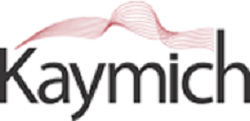British American Tobacco is due today to describe at a conference in Warsaw, Poland, how five criteria can be used to establish whether tobacco is being burnt or heated in a tobacco-heating product (THP).
The conference, the Global Forum on Nicotine, is being held at the Marriott Centrum Hotel, Warsaw, on June 15-17.
The main GFN program, which is scheduled for June 16 and 17, will examine the rapidly developing science in relation to nicotine use and the changing landscape, including policy responses and the influence of different stakeholders in this.
Whether tobacco is heated or burnt is important because it determines the chemical composition of the vapor produced. The very high temperatures at which cigarettes burn mean that there are more than 100 chemicals formed that are thought to be associated with the development of smoking-related diseases.
‘THPs are one of several new categories of product being designed as alternatives to conventional cigarettes – electronic cigarettes are a well-known example,’ BAT said in a pre-conference press note.
‘The burning zone in a cigarette can reach temperatures of between 600 and 950̊ºC, whereas in THPs, the temperature is hundreds of degrees lower. It is high enough to release nicotine and flavorings but not so high as to result in the burning of the tobacco and the creation of many of the very high temperature smoke toxicants thought to be involved in the development of the serious diseases associated with smoking. THPs therefore produce emissions that contain fewer toxicants and as a result have the potential to be significantly reduced risk compared to conventional cigarettes.’
BAT said that though various THPs were commercially available, they differed in the way they heated tobacco and in their temperature characteristics. And currently, there was no standard way of assessing whether a product was mainly heating rather than burning tobacco. So, scientists at BAT had developed a five-step approach to comprehensively assess this aspect of a THP.
“To ensure a THP is producing an aerosol by heating rather than burning tobacco, it is important to characterise the way the tobacco is heated,” Dr. Chuan Liu, head of THP science at BAT, was quoted as saying.
“Our five-step approach provides a comprehensive yet practical assessment irrespective of the heating mechanism in the device.”
The five steps are:
Step 1: ‘Measure any physical or chemical changes in the tobacco as it is heated all the way to cigarette combustion temperature to identify the safe temperature window for THP operation. In glo, British American Tobacco’s THP, the maximum heating temperature is set below 245ºC.
Step 2: ‘Establish the maximum temperature the tobacco is heated to and how long it is heated for when the THP is actually used…
Step 3: ‘Analyse the levels of the following combustion products: CO, CO2, NO and NOx produced by the device when heating tobacco. These are key markers for tobacco that is heated to high temperatures or burnt. Their levels should be much lower than those found in the emissions of a reference cigarette.
Step 4: ‘Measure the level of emissions of a range of other known cigarette smoke toxicants potentially produced by the device. For example, some aldehydes are known to be formed by low-temperature decompositions of carbohydrates. Their levels can be used to judge the extent by which we control this low-temperature breakdown.
Step 5: ‘Examine the physical integrity of the tobacco rod after it has been heated in the device, to assess the extent of any degradation from heating to high temperatures or burning. No charring or ash should be formed.’









